- Home
- State Profile
- Demographics
- Important City of Bihar
State Profile
Important City of Bihar
After the 2011 Census, Bihar was the third most populous state of India with total population of 104,099,452 (54,278,157 male and 49,821,295 female). Nearly 89% of Bihar's population lived in rural areas. The density was 1,106. The sex ratio was 918 females per 1000 males. Almost 58% of Bihar's population was below 25 years age, which is the highest in India. Most of Bihar's population belongs to Indo-Aryan-speaking ethnic groups along with few Dravidian-speaking and Austroasiatic-speaking people mostly in Chhotanagpur Plateau (now part of Jharkhand).Bihar has a total literacy rate of 61.80% (71.20% for males and 51.50% for females), recording a growth of 20% in female literacy over the period of a decade.
At 11.29%, Bihar has the second lowest urbanisation rate in India. As per of the 2011 census, Bihar is India's most densely-populated state.
| Largest cities in Bihar | ||||||||||
|---|---|---|---|---|---|---|---|---|---|---|
| City | District | Population |  |
City | District | Population | ||||
| 1 | Patna | Patna | 20,46,652 | 8 | Arrah | Bhojpur | 2,61,430 | |||
| 2 | Gaya | Gaya | 4,70,839 | 9 | Begusarai | Begusarai | 2,52,008 | |||
| 3 | Bhagalpur | Bhagalpur | 4,10,210 | 10 | Katihar | Katihar | 2,40,565 | |||
| 4 | Muzaffarpur | Muzaffarpur | 3,93,724 | 11 | Munger | Munger | 2,13,303 | |||
| 5 | Purnea | Purnea | 3,10,817 | 12 | Chhapra | Saran | 2,12,955 | |||
| 6 | Darbhanga | Darbhanga | 3,06,089 | 13 | Saharsa | Saharsa | 1,56,540 | |||
| 7 | Biharsharif | Nalanda | 2,97,268 | 14 | Hajipur | Vaishali | 1,47,688 | |||
| Source: Census of India 2011 | ||||||||||
Departments
Administration
Finance
Infrastructure
Agriculture & Allied
Art Culture & Tourism
Website Links
- Bihar Co-Operative Bank, Patna
- Bihar Commission for Backward Classes
- Bihar Electricity Regulatory Commission
- Bihar Foundation
- Bihar Industrial Area Development (BIADA)
- Bihar Infrastructure Mapping
- Bihar Institute of Public Administration
- Bihar Mahadalit Vikas Mission
- Bihar Medical Services & Infra. Corp Ltd.
- Bihar Prashasnik Sudhar Mission
- Bihar Public Service Commission
- Bihar Rajya Pul Nirman Nigam
- Bihar Rajya Beej Nigam Ltd
- Bihar School Examination Board
- Bihar State Aids Control Society
- Bihar State Building Construction Corp Ltd.
- Bihar State Credit & Investment Corp Ltd.
- Bihar State Election Authority (BSEA)
- Bihar State Finance Corporation
- Bihar State Housing Board
- Bihar State Minorities Financial Corp
- Bihar State Pollution Control Board
- Bihar State Power Holding Company Ltd.
- Bihar State Road Development Corp. Ltd.
- Bihar State Seed Certification Agency
- Bihar State Sports Authority
- Bihar Staff Selection Commission
- Bihar State Tourism Development Corp.
- Bihar Tuberculosis Association, Patna
- Bharat Wagon & Engineering Co. Ltd.
- Uttar Bihar Gramin Bank, Muzaffarpur
- BELTRON
- Bihar Urban Infra. Dev. Corp. (BUIDCo)
- Board of Revenue
- Central Excise, Bihar
- Central Excise - e-Auction, Patna
- Central Ground Water Board, Patna
- Central Selection Board of Constables
- Controller of Communication Accounts
- COMPFED - Sudha, Pride of Bihar
- District Health Society, Patna
- State Govt. Tenders
- Directorate of Employment & Training
- Directorate of Rice Development
- Economics & Statistics Directorate
- Flood Management Information System
- Ganga Flood Control Commission
- Indian Red Cross Society, Patna
- Integrated Child Development Services
- Land Development Bank
- Patna Medical College & Hospital
- State Horticulture Mission, Bihar
- Patna Municipal Corporation
- Patna Regional Development Authority
- Railway Recruitment Board, Patna
- Railway Recruitment Cell, Patna
- Railway Recruitment Board, Muzaffarpur
- Small Industries Services Institute
- State Board of Technical Education
- State Election Commission, Bihar
- State Finance Commission, Bihar
- State Health Society, Bihar






